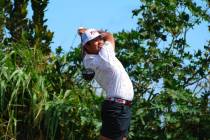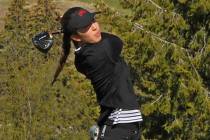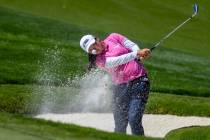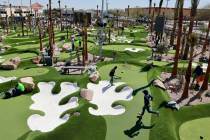Reason for touching green considered when determining penalty
Q. I was watching the Golf Channel's "The Big Break" and had a question about a ruling. One of the golfers, Brian, rubbed his hand across the putting surface and one of the other golfers, Sara, called him on it. The rules official talked to Brian and there was no penalty. Was this a made-for-TV ruling or do the officials on either tour actually ask the players what was going on. Seems to me the rules would be clear on this so I'm unclear on why the official talked to the player before making a ruling. -- Dan Emmett
A. Dan, in some circumstances a rules official needs to ask a player what his intent was before making a ruling. If Brian's intent was to see if the putting surface was wet there would be no penalty. If his intent was to see which way the grain was growing he would incur a 2-stroke penalty for testing the green.
Q. I was in a bunker and my ball was resting on top of a rake up against the vertical wall of the bunker at the furthest point from the hole. When I dropped the ball it rolled closer to the hole and I could not place the ball because of the vertical wall. I would have had to plug the ball into the side of the wall in order to keep it in the hazard and not go closer to the hole. I can't find a rule for this situation? -- Lloyd Wentzell
A. Good question, Lloyd. This happens a lot and players are stumped on how to handle it. There is actually a decision for this very situation (20-3d/2). The answer is, there is nothing in the rules permitting a player to press his ball lightly into the sand or ground to make it remain at rest. Accordingly, since the player could not place the ball in conformity with the rules, he should proceed under the stroke-and-distance option of the unplayable ball rule (Rule 28a) or, in equity (Rule 1-4), drop the ball under penalty of 1 stroke outside the bunker, keeping the point where the ball lay directly between the hole and the spot on which the ball is dropped. This is the very reason that the USGA recommends that rakes be placed outside the bunkers.
Q. (One more ruling for Lloyd.) If you are looking for your ball and can't find it, can you announce you are going to go back to the original spot and play a provisional ball before the five minutes are up and have your group continue to search for your ball? -- Lloyd Wentzell
A. The sole purpose of Rule 27-2a (provisional ball) is to enable the player to save time. The only way he can effectively do so is to play the provisional ball before going forward for the purpose of searching for the original ball. The player may head back to the original spot to put another ball into play under stroke and distance and have his fellow competitors keep looking for his original ball as long as the five minutes have not elapsed. Once the player drops another ball or makes a stroke at another ball from the teeing ground, that ball is in play. Your original ball is now lost, even if your fellow competitors find it within the five minutes, and you must abandon it.
Q. I was playing in our club championship last week and, while trying to climb out of the bunker, I broke the shaft of my wedge. My opponent said I could not replace the club since it was not broken during the normal course of play. Was he right? I did play the rest of the match without the wedge and won my flight. -- Tom Wright
A. Glad you won your championship because your opponent was wrong. A club broken in such circumstances is considered to have become "damaged in the normal course of play" as its use as a cane is considered a reasonable act -- see Decision 4-3/1.
Sue May is a U.S. Open rules official, a member of the USGA Senior Women's committee and tournament director of the Women's Trans National Championship. Address your rules questions to suemay@cox.net.























